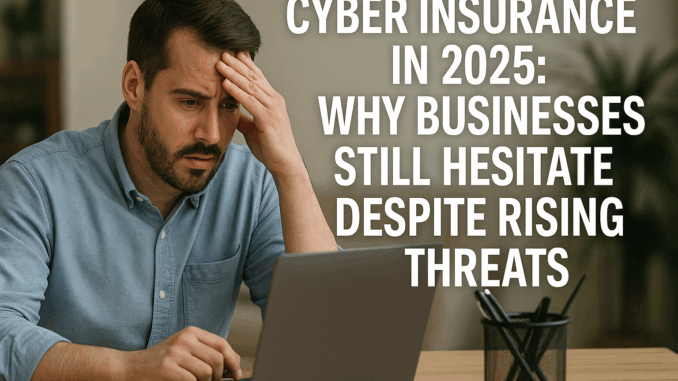
Cyberattacks are more frequent, more expensive, and more sophisticated than ever. Yet despite this alarming rise in digital threats, many businesses in 2025 are still underinsured—or completely uninsured—against cyber risks.
This paradox has puzzled industry experts and insurers alike. Why are companies hesitating to buy cyber insurance when the risks are higher than ever?
💣 The Rising Cost of Cybercrime
In 2025, the global cost of cybercrime is projected to exceed $13 trillion, driven by:
Ransomware attacks targeting supply chains and hospitals
AI-generated phishing and deepfake scams
Cloud service breaches affecting thousands of businesses at once
Yet, according to Beazley’s latest report, cyber insurance adoption remains inconsistent across sectors, with small and mid-size enterprises (SMEs) particularly lagging behind.
🚧 Why Businesses Are Hesitating
Despite growing awareness, businesses cite several reasons for holding back:
1. High Premiums
As loss ratios grow, insurers have raised premiums significantly. For many small businesses, annual cyber insurance costs have doubled in the past two years.
2. Complex Underwriting
Cyber policies often come with lengthy questionnaires and technical requirements. Companies without in-house IT security teams struggle to even qualify for coverage.
3. Unclear Coverage
Many policies contain confusing language about exclusions, especially around social engineering attacks or third-party breaches—leading to a lack of trust in whether claims will be paid.
4. False Sense of Security
Some businesses believe their antivirus software or cloud provider guarantees are enough—until they experience their first attack.
🧩 What the Industry is Doing
Insurers are evolving fast to address these concerns:
Simplified onboarding: More carriers now offer pre-underwritten policies with bundled services for SMEs.
Bundled incident response: Cyber insurance now often includes breach response, PR damage control, and forensic analysis.
Sector-specific policies: Tailored packages are emerging for education, healthcare, fintech, and e-commerce companies.
Beazley’s cyber head notes, “We’re seeing stronger uptake in healthcare and finance, but lag in retail, logistics, and local governments.”
🛡️ Why Every Business Should Reassess in 2025
Cyber insurance is no longer optional—it’s foundational. Whether you store customer data, rely on cloud platforms, or simply use email, you are a target.
The real question is not if you’ll be attacked—but when.
Here’s what smart businesses are doing now:
Conducting regular cybersecurity audits
Training staff on phishing and digital hygiene
Bundling insurance with proactive monitoring tools
Choosing insurers with fast response capabilities, not just payouts
⚠️ Final Thought
Cyber insurance is undergoing a transformation in 2025—becoming smarter, faster, and more aligned with business realities. But for it to truly protect, businesses must act before the breach, not after.
In today’s digital economy, failing to insure against cyber risk isn’t saving money—it’s rolling the dice.
Leave a Reply